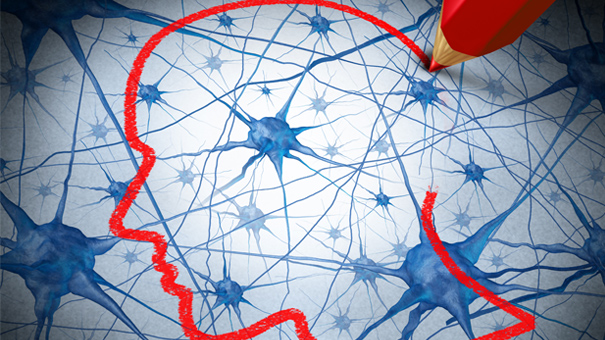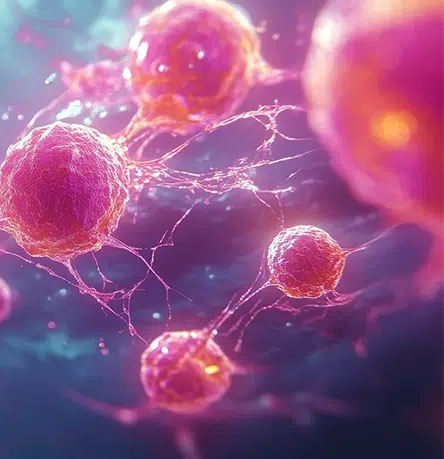
Early involvement of the gastrointestinal tract in development of Parkinson’s disease (PD) has been indicated by the presence of constipation in the premotor (prodromal) stage of PD. In fact, this is one of the earliest non-motor signs of PD, associated with occurrence of a-synuclein aggregation in gastrointestinal nerve endings forming Levy bodies in the gut several years before classical motor clinical presentation of Parkinson’s disease. Several recent studies of the gastrointestinal tract shed new light the prevention of PD and open avenues for larger neuroscience Parkinson’s disease research projects.

Resection of the vagus nerve stopped the spread of α-synuclein
α-synuclein inclusions have prion-like properties, including cell-to-cell transmission, inducing native a-synuclein to misfold, creating a domino-like spreading of cellular pathology throughout the vagus nerve and into the Central Nervous System (CNS)1. In a transgenic rodent model of PD, the intraperiotenal injection of α-synuclein fibrils led to its deposition within the vagus nerve, resulting later in widespread brain a-synucleinionapthy and severe neurological disorders2. Intragastric injection of rotenone (insecticide for experimental Parkinsonism) initiates α-synuclein accumulation in the enteric nervous system which spreads to the vagal dorsal motor nuclei and substantia nigra3. Resection of the vagus nerve before rotenone treatment stopped the spread of α-synuclein4.
Lower Parkinson’s risk observed among patients with truncal vagotomy
If the vagus nerve is a major route for centripetal propagation of PD pathology, surgical vagotomy could be protective against PD. This statement has been reviewed in the April 2017 issue of by Liu et al5 using the Swedish registers. This matched-cohort study included 9430 vagotomized patients (3445 truncal and 5978 selective) identified between 1970 and 2010 and 377200 reference individuals from the general population.
Overall, vagotomy was not associated with PD risk (HR 0.96, 95%CI 0.78–1.17). However, there was a suggestion of lower risk among patients with truncal vagotomy (HR 0.78, 95% CI 0.55–1.09), which may be driven by truncal vagotomy at least 5 years before PD diagnosis (HR 0.59, 95% CI 0.37–0.93).
Selective vagotomy was not related to PD risk in any analyses. The “Swedish” data are congruent with data using the Danish national registers from 1977-1995 where authors reported 15% lower PD risk > 5 years after truncal vagotomy compared to the general population6. The Danish study did not differentiate truncal and selective vagotomy. Tysnes at al7, who analysed the same Danish population with extended follow-up (1977–2011), reported a nonsignificant lower PD risk for truncal vagotomy overall (HR 0.88, 95% CI 0.55–1.21) and a nonsignificant elevated PD risk >20 years after the surgery (HR 1.14, 95% CI 0.23–2.05).
Vagotomy as putative treatment for patients with high risk of Parkinson’s
At this stage, we have insufficient knowledge or data from Parkinson’s disease trials to consider vagotomy as a putative treatment for PD, although one may consider studying the effect of vagotomy in patients with high risk conditions for development of Parkinson’s disease such as mutation in the leucine-rich repeat kinase-2 gene (LRRK2) or glucocerebrosidase (GBA) heterozygous mutation, which is the most prevalent genetic biomarker, affecting 5-10% of the PD population.
Finally, if the initial a-synuclein aggregation happens in the gastrointestinal lining, what triggers this misfolding event? Although vagotomy will likely never become a widespread treatment for PD, strategies to prevent a-synuclein misfolding in the gastrointestinal tract may be proposed because nerve terminals are reachable by oral therapeutic interventions8.
What’s Next for Neuroscience Parkinson’s Disease Research?
If you’d like to discuss the state of Parkinson’s disease research, connect with our clinical research experts here.
- Goedert M, Masuda-Suzukake M, Falcon B. Like prions: the propagation of aggregated tau and alpha-synuclein in neurodegeneration. Brain 2017;140:266–
- Breid S, Bernis ME, Babila JT, Garza MC, Wille H, Tamguney G. Neuroinvasion of alpha-synuclein prionoids after intraperitoneal and intraglossal inoculation. J Virol 2016;90:9182–
- Pan-Montojo F, Anichtchik O, Dening Y, et al. Progression of Parkinson’s disease pathology is reproduced by intragastric administration of rotenone in mice. PloS One 2010;5:e8762.
- Pan-Montojo F, Schwarz M, Winkler C, et al. Environmental toxins trigger PD-like progression via increase alpha-synuclein release from enteric neurons in mice. Sci Rep 2012;2:898.
- Liu B, Fang F, Pedersen NL, et al. Vagotomy and Parkinson disease: a Swedish register–based matched-cohort study. Neurology, Published online April 26, 2017, 10.1212/WNL.0000000000003961.
- Svensson E, Horvath-Puho E, Thomsen RW, et al. Vagotomy and subsequent risk of Parkinson’s disease. Ann Neurol 2015;78:522–
- Tysnes OB, Kenborg L, Herlofson K, et al. Does vagotomy reduce the risk of Parkinson’s disease? Ann Neurol 2015;78:1011–
- Borghammer P, Hamani C. Preventing Parkinson’s disease by vagotomy. Fact or fiction. Neurology 2017:88:1-2


